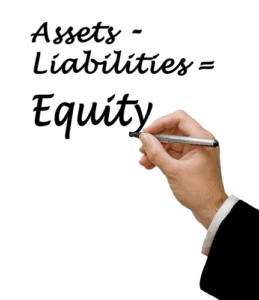
Consolidation accounting gives management an overview of their entire enterprise as a single unit rather than several separate subsidiaries or divisions. By consolidating accounts, companies can get a Online Bookkeeping better picture of their financial situation as it stands right now and plan accordingly for future trends. The process begins with identifying all related entities within the consolidation group and then incorporating them into one reporting entity. It requires consolidation adjustments such as eliminating inter-company transactions and accounts receivables and recognizing goodwill when appropriate. When it comes to consolidating in accounting, there is a lot of confusion surrounding the different types of consolidation, particularly between the financial statement and legal consolidation. It is vital for those unfamiliar with consolidating to understand that these two processes are quite different.
WHAT IS THE PURPOSE AND PROCESS OF CONSOLIDATED GROUP ACCOUNTING?
Furthermore, consolidated accounts are essential for compliance with financial reporting standards and are often required by regulatory bodies. They also play a key role in strategic decision-making, allowing executives to evaluate the collective impact of operational decisions across the group. Imagine a multinational corporation, GlobalTech Inc., which owns several subsidiaries around the world.

GAAP Revenue Recognition: Key Principles and Accounting Practices
- Consolidation can create greater ease in comparing different parts of a company’s financial performance.
- Accordingly, there is a 100% combination of all the revenue generated by the child/subsidiary to the parent.
- In business, to consolidate is for smaller companies to unite with larger companies through mergers and acquisitions (M&A).
- IAS 28 also states that a holding of 20% or more of the ordinary (voting) shares can be presumed to give the investor significant influence unless it can be demonstrated otherwise.
- Consolidation also helps minimize errors arising from manual processes or incorrect calculations.
These software CARES Act solutions automate the consolidation process, facilitate intercompany eliminations, and generate consolidated financial statements more efficiently. Generally, 50% or more ownership in another company defines it as a subsidiary and gives the parent company the opportunity to include the subsidiary in a consolidated financial statement. In some cases, less than 50% ownership may be allowed if the parent company shows that the subsidiary’s management is heavily aligned with the decision-making processes of the parent company. Without the consolidated financial statements, you might be missing key pieces of the puzzle that show how well the business is doing. This process includes eliminating inter-company transactions among subsidiaries to avoid double counting and presenting a unified balance sheet, income statement, and cash flow statement.

Consolidated Accounting

Just upload your form 16, claim your deductions and get your acknowledgment number online. You can efile income tax return on your income from salary, house property, capital gains, business & profession and income from other sources. Further you can also file TDS returns, generate Form-16, use our Tax Calculator software, claim HRA, check refund status consolidated account meaning and generate rent receipts for Income Tax Filing. Accounting errors can take on many forms and can occur at any stage of the recording process. Such errors include incorrect balances, duplicate entries, miscalculations, and intentional fraud. Yes, there are various case studies and examples that illustrate the practical application of consolidation principles and the challenges faced during the process.

Simplify your consolidation process with powerful financial solutions.
Moreover, this change requires might raise doubts in the minds of investors who spend in the company assets for returns. Consolidated financial statements are financial statements that present the assets, liabilities, equity, income, expenses and cash flows of a parent and its subsidiaries as those of a single economic entity. The next step is to collect the financial statements of the parent company and its subsidiaries. These statements include the balance sheet, income statement, statement of cash flows, and statement of changes in equity. Consolidated financial statements are a method of presenting the financial health of a company along with its departments in one combined document. Instead of having separate financial reports for each entity, these statements merge the financial data.
- For instance, if Subsidiary A sells products to Subsidiary B, these sales are not included in the consolidated revenue because they do not represent external sales to third parties.
- Then, any profit/income from the investment in the future will reflect the changes in the value of the investment.
- Consolidated Financial Statement depicts what a group of companies is heading toward.
- Consolidation requirements are determined by Generally Accepted Accounting Principles (GAAP) and International Financial Reporting Standards (IFRS).
- This document provides valuable insight into the financial changes affecting shareholder value.
- Challenges include dealing with different accounting policies, currency translations, complex ownership structures, and eliminating intra-group transactions and balances.

For this purpose, intra-group transactions must be eliminated from the results if, for example, intercompany transactions have taken place between two affiliated companies. Only this offsetting ensures that the overall balance sheet shows the actual economic power of the group. This method reports the parent’s proportional share of the subsidiary’s earnings rather than just the dividends received. This gives a more comprehensive view of the parent’s financial performance by including its share of the subsidiary’s profits, even if those profits are not distributed as dividends. Consolidation is also defined as a set of financial statements that presents a parent and a subsidiary company as one company. Consolidated accounts are financial statements that factors the holding company’s subsidiaries into its aggregated accounting figure.
The consolidated statement of changes in shareholders’ equity is typically included in quarterly or annual financial disclosures. This helps investors, creditors, and stakeholders understand the company’s true financial condition without having to sift through individual reports for each department. Consolidated account statement gives an investor all the details of his or her mutual fund transactions in an orderly manner at a single place. You can request for hard copy as well as soft copy of CAS once a month at free of cost. It also ensures that data is reported accurately across all entities within the organization – it helps avoid any discrepancies or misstatements that could lead to legal problems. One such term is “merge” or “merging.” Merging involves combining two companies into one company with only one legal entity.